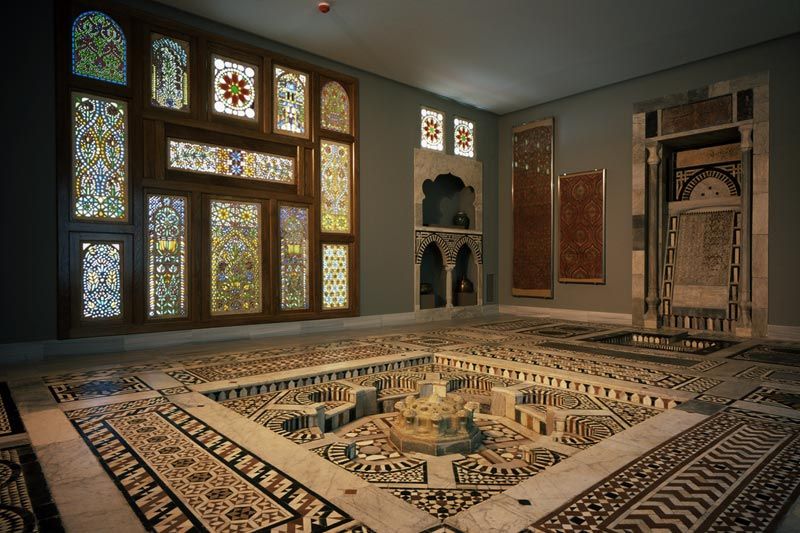
Museum of Islamic Art in Cairo
The Museum of Islamic Art in Cairo is a renowned cultural institution that showcases the rich heritage and artistic excellence of Islamic civilization. Located in the heart of Cairo, Egypt, the museum boasts a vast collection of Islamic art spanning over a thousand years. This document aims to provide an overview of the museum, its history, architecture, and the diverse range of exhibits it houses.
1-History of the Museum
Established in 1881, the Museum of Islamic Art in Cairo is one of the oldest and most prestigious museums dedicated to Islamic art in the world. It was founded by Khedive Abbas Helmi II, the reigning monarch of Egypt at that time, with the vision of preserving and promoting the artistic achievements of Islamic civilization.
2- Architecture
The museum building itself is a masterpiece of Islamic architecture. Designed by the Spanish architect Alfonso Manescalo, it combines elements of traditional Islamic design with modern influences. The structure features grand domes, intricate arches, and decorative motifs that reflect the elegance and beauty of Islamic art.
3-Exhibits
The Museum of Islamic Art houses an extensive collection of artifacts, spanning various mediums such as ceramics, textiles, metalwork, woodwork, and calligraphy. The exhibits are organized chronologically, allowing visitors to explore the evolution of Islamic art across different periods and regions.
1-Ceramics: The museum boasts an impressive collection of Islamic ceramics, including exquisite examples from the Abbasid, Fatimid, and Mamluk periods. Visitors can admire intricately decorated pottery, colorful tiles, and ornate ceramic vessels that showcase the skill and craftsmanship of Islamic artisans.
2-Textiles: The museum’s textile collection is equally remarkable, featuring rare and beautifully woven fabrics from different Islamic dynasties. Visitors can marvel at intricate silk carpets, embroidered textiles, and delicate textiles from Egypt, Persia, and beyond.
3-Metalwork: The museum’s metalwork collection includes stunning examples of Islamic craftsmanship, such as intricately designed armor, swords, and ceremonial objects. These objects highlight the mastery of metalworkers in creating functional and ornamental pieces.
4-Woodwork: The museum’s woodwork collection showcases the intricate carving and woodworking techniques employed by Islamic artisans. Visitors can admire intricately carved doors, screens, and furniture, which exemplify the fusion of Islamic geometric patterns and natural motifs.
5-Calligraphy: Islamic calligraphy, an integral part of Islamic art, is prominently displayed in the museum. Visitors can appreciate beautifully written Quranic verses, religious manuscripts, and calligraphic panels that highlight the importance of the written word in Islamic culture.
The Museum of Islamic Art in Cairo is a treasure trove of Islamic art and culture. Its remarkable collection, stunning architecture, and historical significance make it a must-visit destination for art enthusiasts, scholars, and anyone interested in exploring the rich artistic heritage of the Islamic world. Through its exhibits, the museum provides a glimpse into the diverse and vibrant artistic legacy of Islamic civilization, leaving visitors with a deeper appreciation for the beauty and creativity that has shaped the world we live in today.

